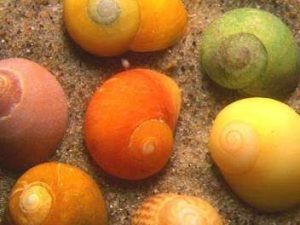Saving the small things that run the planet
Our seas are home to a vast array of invertebrates, many of which can be found in rock pools at low tide. Our marine habitats include our inland rocky shores, beaches, estuaries and the seas around the coasts and islands of the UK. Some of the invertebrates that can be found in our marine coasts include the following:
Sponges (Phylum Porifera)
These are sessile (living in one place and unable to move), filter-feeding animals that have cells that aren’t differentiated into any obvious tissues. Sponges have numerous small holes through which sea water enters an inner cavity of the sponge. In this inner cavity food particles are filtered out from the water and then the filtered sea water leaves through a large exit pore. Species of sponge include those that look vase shaped or those that look as if they are encrusted onto rocks or other features. Not only do you find sponges living in our seas but also our freshwater habitats.
Jellyfish and Sea Anemones (Phylum Cnidaria)

This well-known group has specimens that range in shape and size. It includes sea anemones that cling to rocks and are often found in rockpools during low tide. The sea anemone Calliactis parasitica attaches itself to the shells of the Common Whelk (Buccinum undatum) that are occupied by the Common Hermit Crab (Pagurus bernhardus)- this is known to be a commensal relationship benefiting both the sea anemone and Common Hermit Crab! Jellyfish are free-swimming and many have long-flowing tentacles that are covered in stinging cells used to catch prey – sea anemones also have these stinging cells in their tentacles! The stings of some species of jellyfish can’t be felt but many are painful and often medical advice is required.
Crabs and their relatives (Phylum Crustacea)
Crustaceans are a varied group that includes crabs, lobsters, shrimps, prawns, barnacles, woodlice, and copepods.
The free-swimming forms of copepods are a significant component of zoo-plankton; zoo-plankton are small microscopic animals and the immature stages of larger animals that drift and are carried along by currents across the oceans. Copepods typically have a pear-shaped body and often carry a pair of egg sacs. There are also parasitic species of copepods that attach themselves to fish and other creatures and have unusual body forms when compared to those of the free-swimming species.

Crabs are familiar to all who have been to the seaside and looked under stones and in rock pools. There are around 65 species of crab in the UK. All are marine, except for the non-native Chinese Mitten Crab (Eriocheir sinensis), which occurs in fresh and brackish water. Our crab’s range in size from the deep-water carrier crabs (Paromola cuvieri), which can reach a claw span of 1.2 metres, to the Pea Crab (Pinnotheres pisum), which is only 4 mm wide and lives inside the shells of the Common Mussel (Mytilus edulis).
Snails and Sea Slugs (Class Gastropoda, Phylum Mollusca)
Mollusca are an incredibly diverse group that includes not only snails and sea slugs but also octopus, squid and chitons.

The shells of sea snails are widely collected by visitors to the seaside- we are all familiar with Periwinkles (Littorina species), but have you heard of Pelican’s Foot (Aporrhais pespelecani) and Spotted Cowrie (Trivia monacha)?
Sea slugs are beautiful and elusive creatures. Like land slugs they either lack a shell or carry a small one that is hidden in their body folds. Some crawl on the seabed while others have wing-like flaps that they use to swim through the sea.
Other invertebrates to look out for along our coasts include starfish, sea urchins, woodlice, sea squirts, sea cucumbers and sea spiders. You never know what you will find down at the seaside!
Help us to stop the extinction of invertebrate species
Engage with our work
Stay up to date with our work and help spread the word by following us on our socials and signing up to our monthly BugBytes email newsletter.
Donate to support us
Every contribution helps us to save the small things that run the planet by restoring vital habitats and rebuilding strong invertebrate populations in the UK.
Make a donationBecome a member
Join a community of invertebrate champions and access exclusive member benefits from just £3 a month, all whilst supporting our vital conservation work.
Join us